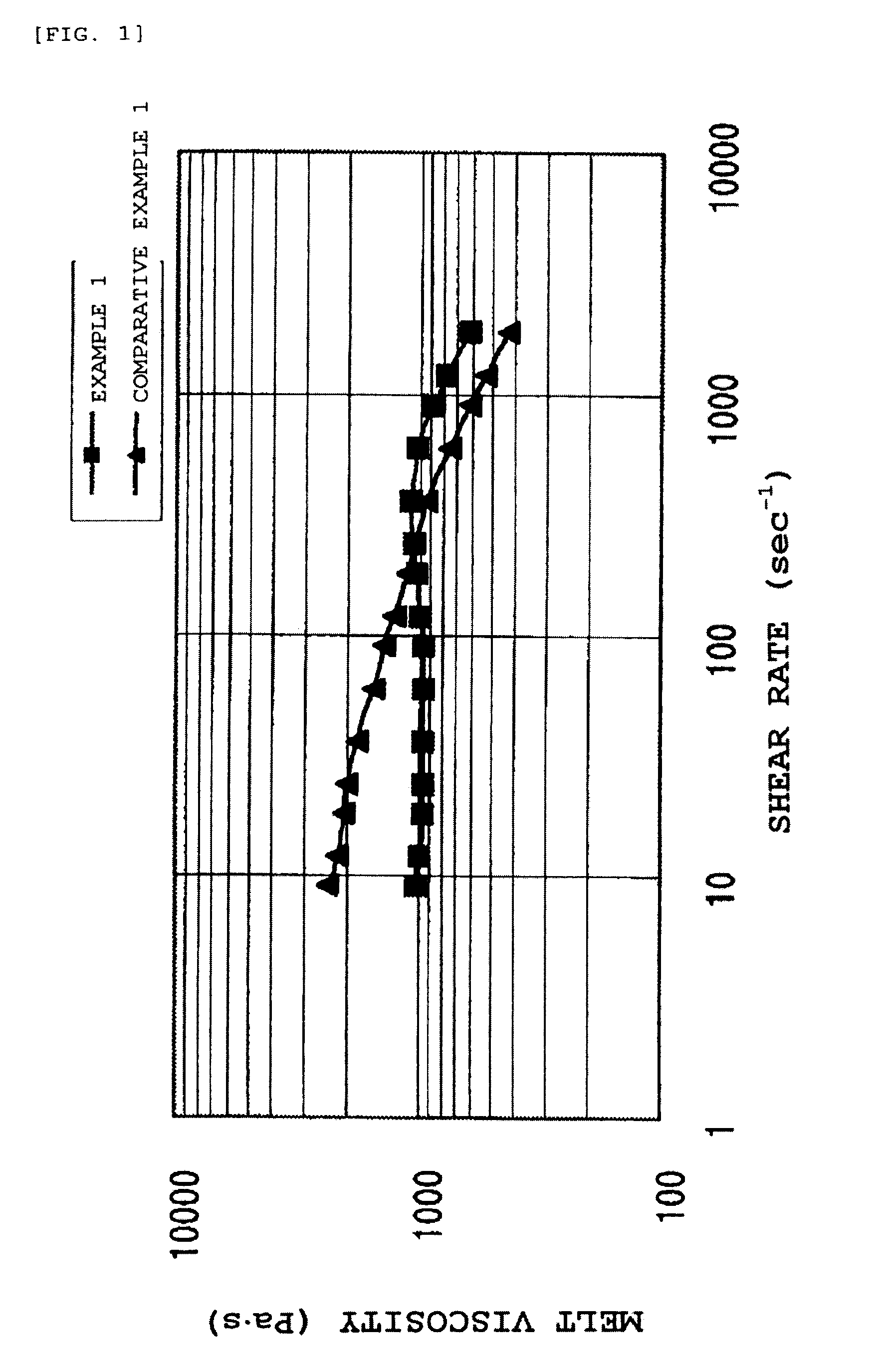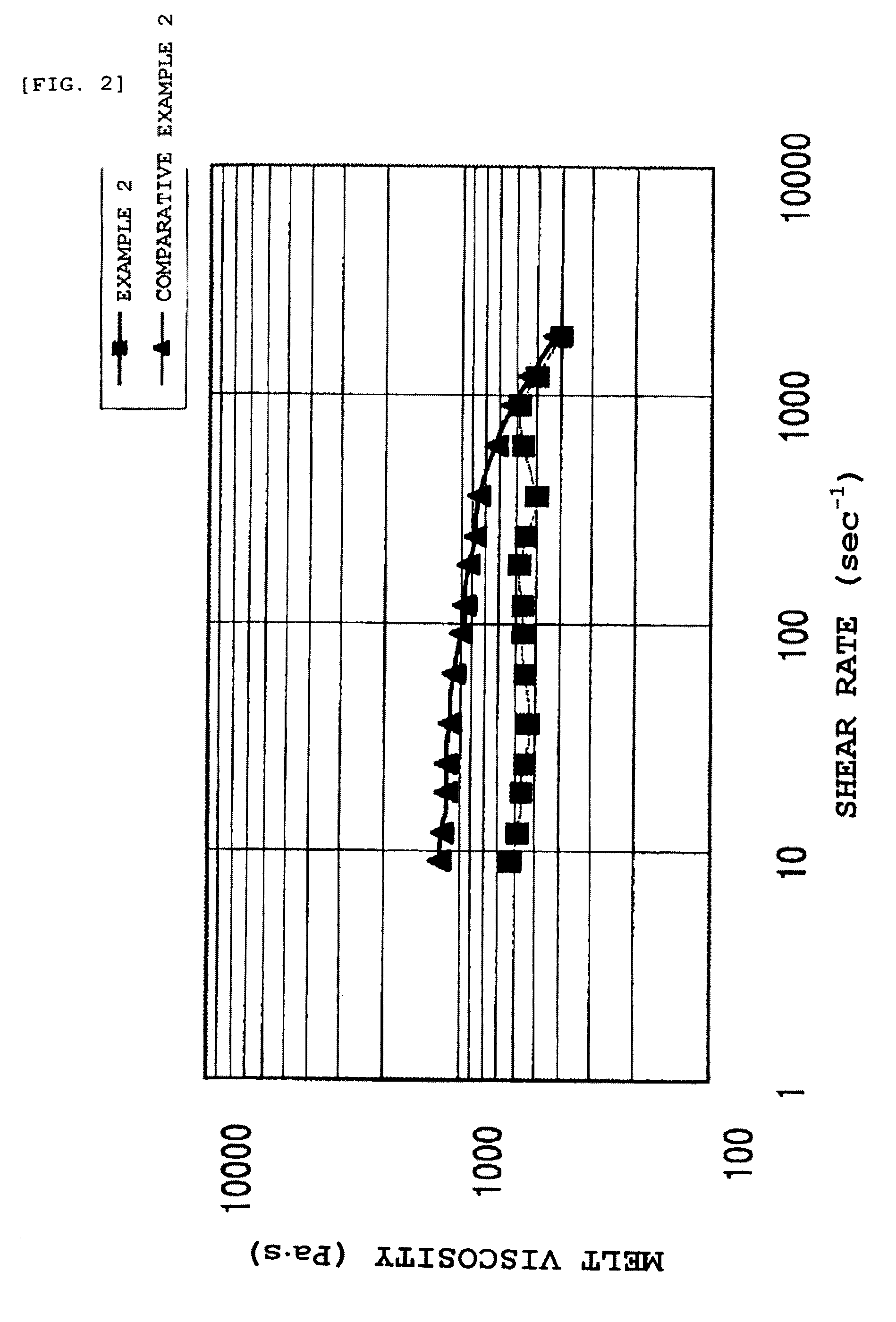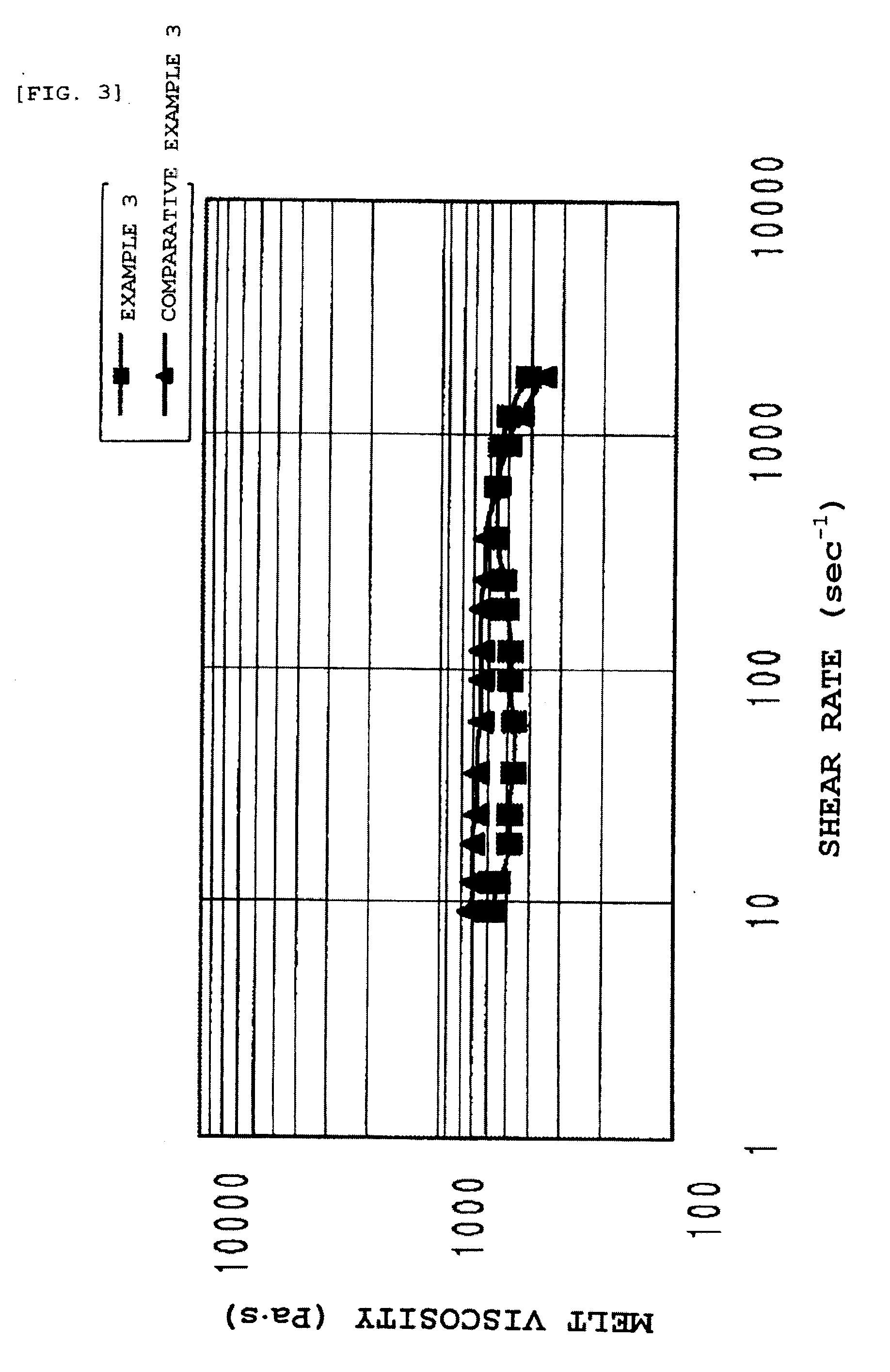Polycarbonate resin
a polycarbonate resin and polycarbonate technology, applied in the field of polycarbonate resins, can solve the problems of insufficient ultrahigh flowability and preciseness of thin molding, and achieve the effects of good flowability, good flowability, and good flowability
- Summary
- Abstract
- Description
- Claims
- Application Information
AI Technical Summary
Benefits of technology
Problems solved by technology
Method used
Image
Examples
example 1
[0110]An aqueous solution obtained by dissolving bisphenol A in a sodium hydroxide aqueous solution having hydrosulfite dissolved therein at 35° C. and then cooling to 25° C., and methylene chloride cooled to 5° C. were continuously supplied to a stainless steel pipe having an inner diameter of 6 mm, followed by mixing. The mixed liquid was emulsified by passing through a homomixer (T.K. Homomic Line Flow LF-500 Model, a product of Premix Corporation) to prepare an emulsion. Supply amounts to the pipe are bisphenol A: 16.31 kg / hr, sodium hydroxide: 5.93 kg / hr, water: 101.1 kg / hr, hydrosulfite: 0.018 kg / hr, and methylene chloride: 68.0 kg / hr.
[0111]The emulsion formed was flown in a Teflon (a registered trade make) pipe reactor having an inner diameter of 6 mm and a length of 34 m through a pipe having an inner diameter of 6 mm. At the same time, liquefied phosgene cooled to 0° C. was supplied to the pipe reactor at 7.5 kg / hr to react, thereby forming an oligomer. Flow rate of the pip...
example 2
[0115]A polycarbonate resin of the present invention was produced in the same manner as in Example 1, except that the amount of pyridine hydrochloride added was 0.72 g (0.015 mol % to bisphenol), the amount of benzoyl chloride added was 171 g (2.95 mol % to bisphenol) and a 25 wt % sodium hydroxide aqueous solution was 200 g. Properties of the polycarbonate resin obtained are shown in Table 1 and FIG. 2. Melt viscosity and spiral flow length (SFL) were measured at 280° C.
example 3
[0116]A polycarbonate resin of the present invention was produced in the same manner as in Example 2, except that polymerization reaction was conducted by stirring at 10° C. for 60 minutes at 320 rpm to obtain an all OH-ended polycarbonate resin, and 283 g (4.87 mol % to bisphenol) and 343 g of a 25 wt % sodium hydroxide aqueous solution were added to the reaction mixture to conduct polymerization reaction. Properties of the polycarbonate resin obtained are shown in Table 1 and FIG. 3. Melt viscosity and spiral flow length (SFL) were measured at 250° C.
PUM
| Property | Measurement | Unit |
|---|---|---|
| specific viscosity | aaaaa | aaaaa |
| concentration | aaaaa | aaaaa |
| viscosity | aaaaa | aaaaa |
Abstract
Description
Claims
Application Information
 Login to View More
Login to View More - R&D
- Intellectual Property
- Life Sciences
- Materials
- Tech Scout
- Unparalleled Data Quality
- Higher Quality Content
- 60% Fewer Hallucinations
Browse by: Latest US Patents, China's latest patents, Technical Efficacy Thesaurus, Application Domain, Technology Topic, Popular Technical Reports.
© 2025 PatSnap. All rights reserved.Legal|Privacy policy|Modern Slavery Act Transparency Statement|Sitemap|About US| Contact US: help@patsnap.com



